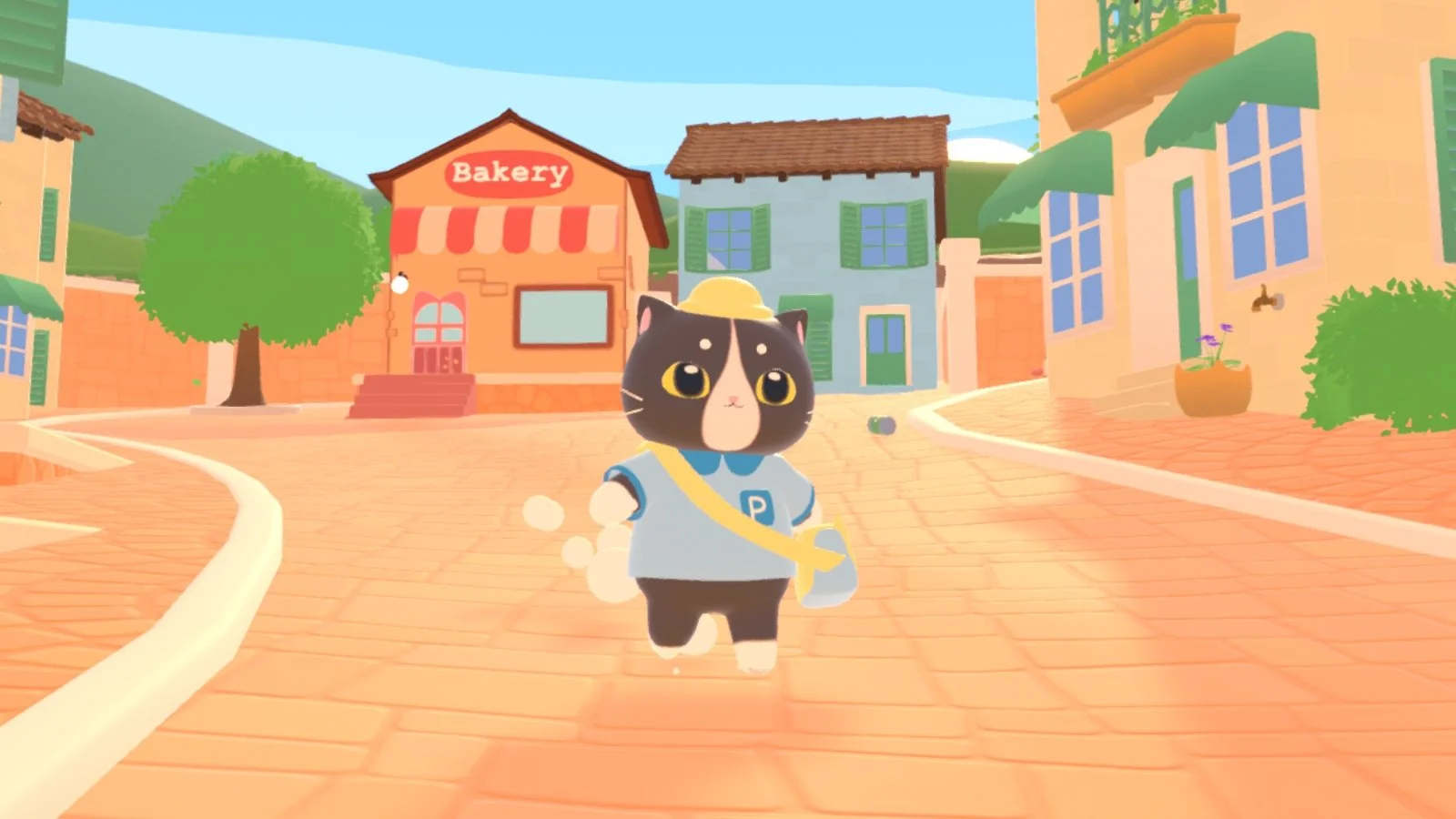Game Thoughts: Rolling Hills: Make Sushi, Make Friends
I’ve gone on record several times as loving a simple, straightforward management sim, and Rolling Hills: Make Sushi, Make Friends is an easy, breezy gameplay experience. You play Sushibot, a rounded-corner, square robot who arrives in the sleepy town of Rolling Hills under the auspices of opening a bustling new restaurant in a hopping, populous area. When you arrive, you find out the mayor lied to you and the town is mostly held up by himself and his three kids, who run the three other businesses in town. When you open your restaurant, however, you begin to attract newcomers, including a thespian, a professional clown, an uber-popular streamer, and more.
Getting to know the townspeople and its visitors allows you to upgrade your recipes, your decor, and the size of your restaurant. It also lets you unlock special skills that make resource gathering much easier. As you get into a daily routine and form friendships, you begin to unlock the town’s history, which is vaguely mystic: if you can recreate ancient recipes using rare ingredients, you might even restore long-gone gods to their corporeal forms and return Rolling Hills to its former status.
Rolling Hills gameplay
Rolling Hills: Make Sushi, Make Friends takes place on a very small, circular map that doesn’t take long to traverse. The Steam version of the game works great with a controller, especially since Sushibot mostly rolls around (sometimes dashing, if you want to see him zoom) and interacts with various items through the tap of a button. The most complicated mechanic of the game is decorating your restaurant, which requires multiple buttons to pick up, move, rotate, and place furniture. Each time you expand the restaurant, you’ll have to move things again, much like in Animal Crossing or Stardew Valley—unless you’re cool with things just kind of randomly existing where a wall used to be, but isn’t anymore. Furniture also has perks: it can increase customer patience, increase your income, and more.
When you open the sushi restaurant each day, you have to navigate your furniture placement, so keep that in mind. Five dishes at a time will load onto the sushi conveyor belt, and each one is random in color and quality. To increase dish quality, buy and use ingredients. Make sure to serve customers the appropriate color and quality dish or they’ll complain, which knocks down your popularity score. The only way to progress through the story is to increase the popularity of your restaurant, so keep an eye on this!
In addition to serving the right food before customers’ patience runs out, you may also have to wake customers up by honking a horn next to them, clean tables, and/or interrupt phone calls before other customers get mad about the loudness and leave. Each service is randomly generated, so each one is just a little different than the one before. There are always three rounds of customers each time the restaurant is open.
The game isn’t fully voiced, so dialogue is fully captioned, and quests are marked with orange exclamation points though you can also visit your journal to see what tasks you have available. By marking a task as primary, you’ll often see a trail of sparkles leading Sushibot to wherever his next destination is in the quest.
Truthfully, the gameplay in Rolling Hills is exceedingly simple, but that’s kind of nice. However, it’s also the game’s primary flaw. It can get a little boring to repeatedly complete daily tasks and serve sushi as you try to rank up to get more story, which is ostensibly the goal of the game. I played Rolling Hills: Make Sushi, Make Friends for much longer than I expected, not because I had a difficult time managing my resources or time, but because the popularity goals increase fast and the progression rate remains relatively slow.
sUSHIBOT IS adorable
Rolling Hills is a complete game, which is more than can be said of many new releases in the live-update era. It’s short and sweet and has its lulls, but it also has a lovely story and beautiful art. Sushibot is adorable and his movements are reflective of his design as a one-wheeled, square robot designed to serve sushi. The townspeople and visitors in Rolling Hills represent a range of skin tones, hair types, styles, and interests. Unfortunately, there’s no body diversity aside from the non-human characters, which is disappointing. The art style is so cute and I’d love to see more body types represented in it.
The actual sushi is also stunning. Each roll or dish is unique and detailed, ranging from realistic sushi that immediately makes me crave inari, to silly, gamified sushi with playful elements like UFOs, rice cows, and clown rolls with magical properties. You collect recipes by leveling up the restaurant, buying them from the traveling sushi chef who occasionally comes to town to vend, and completing quests.
Although the map of Rolling Hills is small, I actually prefer it that way. The tight focus of the game clearly allowed for more creativity and detail work, which makes it feel worth playing even when the story stalls out a little bit. I love the bright colors, the array of quests, the collecting aspect, the medium-paced restaurant management. Getting lost here feels lovely in the moment, and as such, I'm genuinely pleased with my overall experience in Rolling Hills: Make Sushi, Make Friends. Other cozy games could take a page from its book, pare down, and focus on beautiful art with a solid story centered in a relatively small area rather than trying to sprawl when they don’t need to.
Rolling Hills: Make Sushi, Make Friends is available for Xbox and PC via Steam. A copy of the game was provided by the publisher for review.
✦ Like what you read? Leave a tip!
✦ Want to have posts like this delivered straight to your inbox (with bonus content)? Subscribe to my newsletter!




